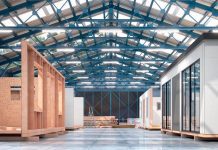
The New South Wales Government is embracing cutting-edge technology to address the ongoing housing and homelessness crisis by using 3D printing to construct social housing.
This innovative approach promises to cut construction time in half and significantly reduce costs, marking a major step forward in the delivery of affordable housing across the state, the government said in a media release.
The first social housing property of this kind in New South Wales will be built using 3D printing technology. The new construction method is expected to cut building time from the traditional 40 weeks to just 16 weeks, offering a much faster solution to the escalating demand for social housing.
“Using cutting-edge technology for this project is a prime example of the NSW Government’s commitment to ‘think outside the box’ by exploring every possible option when it comes to delivering more housing for those who need it,” said Minister for Housing and Homelessness, Rose Jackson.
“Utilising Modern Methods of Construction like this 3D printing technology is critically important to delivering social and affordable homes sooner, especially in regional and remote areas.”
The NSW Government has partnered with Aboriginal Sustainable Homes (ASH) and Contour3D to bring this project to life.
The collaboration will transform a vacant block of land in Dubbo into two two-bedroom duplexes, providing secure housing for tenants under the Aboriginal Housing Office (AHO).
This partnership highlights the government’s commitment to incorporating innovative solutions into housing construction, particularly for vulnerable communities.
According to the government, 3D printing not only accelerates the building process but also offers significant environmental benefits.
The technology produces less waste, and the concrete mix used is composed of eco-friendly, high-recycled materials.
This results in energy-efficient homes with lower maintenance costs, presenting a sustainable and cost-effective solution to the housing crisis.
“The success of this project will help to determine whether this construction method becomes one of the many ways we can deliver more social housing right across the state in a bid to help us tackle the growing crisis,” Jackson added.
“Our government is leading the way with this project. The construction of a 3D social housing property is the first of its kind in the country.”
Construction of the 3D printed social housing is set to begin in late September 2024. The project’s outcome could pave the way for broader adoption of this technology in addressing the housing shortage, particularly in regional and remote areas.
“This trial by the state government of 3D printing of social housing is very exciting,” said Stephen Lawrence, Member of the Legislative Council.
“The results will be carefully examined and used to guide future use of the technology where appropriate.”
Dubbo Regional Council Mayor Mathew Dickerson expressed strong support for the initiative, highlighting the potential for this project to boost housing availability in the region.
“Dubbo Regional Council is supportive of this project that is embracing new ways of construction with the objective to boost housing availability in our region,” he said.
Aboriginal Sustainable Homes (ASH) Managing Director Brad Draper shared his enthusiasm for the project, praising the AHO for their forward-thinking approach.
“ASH is delighted to be involved in this project and applaud the Aboriginal Housing Office for pioneering new ways to deliver social housing,” Draper said.
“As an Aboriginal company, we are proud to deliver these quality homes that will have far-reaching benefits for residents long into the future.”
Contour3D Founder and CEO Nick Holden emphasised the innovative nature of the project, stating, “We’re excited to showcase our innovative building method that prioritises sustainability, design freedom, and efficiency by bringing automation to the forefront of housing construction.”


















